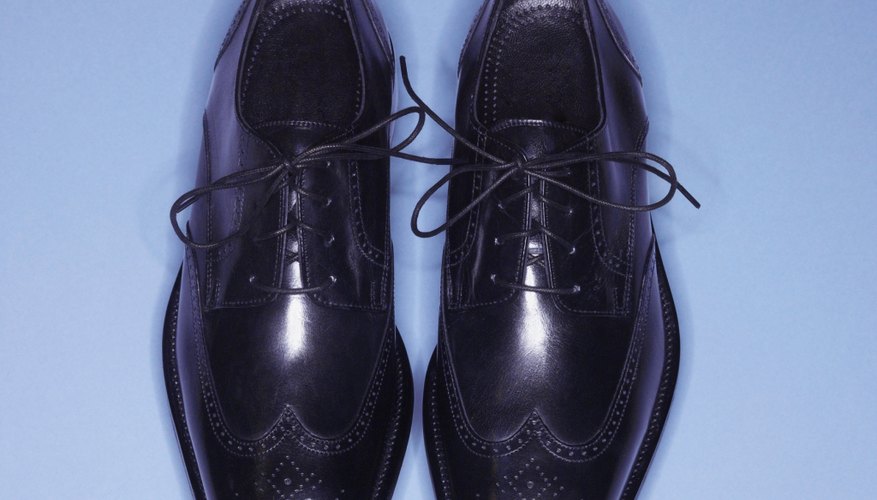Bright coloured leather shoes occasionally fade unevenly, resulting in a pair that don’t quite look the same. Sometimes you might buy the last pair of shoes on sale that already have this defect when new, as one has been displayed in a sunny window while the other has always been kept safe inside its dark box. Coloured wax polish helps to fix this problem, if it is not too pronounced. This is also particularly good for nourishing soft leather shoes bought from markets in hot countries. These are not always colour fast and suffer badly in the damp British climate. To fix more obvious differences in shades, or completely different colours, dying shoes can work well.
Polish
Clean shoes using a firm brush to dislodge solids and a cloth to make sure they are spotless.
Apply wax shoe polish with a clean cloth.
Be liberal and rub in generous amounts of polish to even out the shade of the two shoes.
Follow instructions for the particular polish you are using. This usually involves leaving the polish to dry for a few minutes before buffing shoes to a shine. Use a cloth for cream polish, and a soft brush for a wax product that gives maximum shine.
Polish shoes like this regularly to help build a perfect and even finish over time. You will also be protecting and nourishing the leather, so they remain looking good.
- Clean shoes using a firm brush to dislodge solids and a cloth to make sure they are spotless.
- Polish shoes like this regularly to help build a perfect and even finish over time.
Dye
Choose a high quality leather dye made specifically for shoes, so you do not damage the leather.
Ensure shoes are clean and dry.
Prepare the shoes with a leather deglazer. These are available from professional leathercraft suppliers and shoe dye specialists. Follow the instructions for the exact product, but the application usually involves rubbing the product into the leather with a clean cloth.
Apply leather dye and follow the instructions for the exact brand of dye. Dabbing the colour on with a sponge or brush is usually easiest with shoes.
Keep the dye on the outside of the shoes so that it does not stain the feet or hosiery when you wear the shoes.
- Choose a high quality leather dye made specifically for shoes, so you do not damage the leather.
- Keep the dye on the outside of the shoes so that it does not stain the feet or hosiery when you wear the shoes.
Let the dye dry and then reapply it as needed. Most shoes need two coats. If the original colours are wildly different, you may have to adjust your application accordingly so that you get an overall even colour.
Let shoes dry for the specified time, which is usually several hours, then apply a matching wax shoe polish to create a smooth finish. Use clear beeswax polish if you cannot find a matching shade, but be aware that this can darken the overall colour a little.
TIP
Protect soles, heels and areas of the shoes you do not wish to colour with masking tape before starting.
Work on newspaper when using polish or dye and use plastic sheeting underneath to protect surfaces if unsure.
Choose a coloured polish or dye that is at least as dark as the darker of the two shoes. You may have to apply more product to one of the shoes, but if the colour is lighter than either of the shoes you won’t be able to build it to an even colour.
Do not hurry the preparation process as cleaning and stripping the factory finish from shoes gives the best dye results.
WARNING
Special finishes, like patent, do not take dye or polish well. You must strip these completely before dyeing shoes, although be aware that this will dramatically change the overall look of the shoes and is something you cannot restore.
